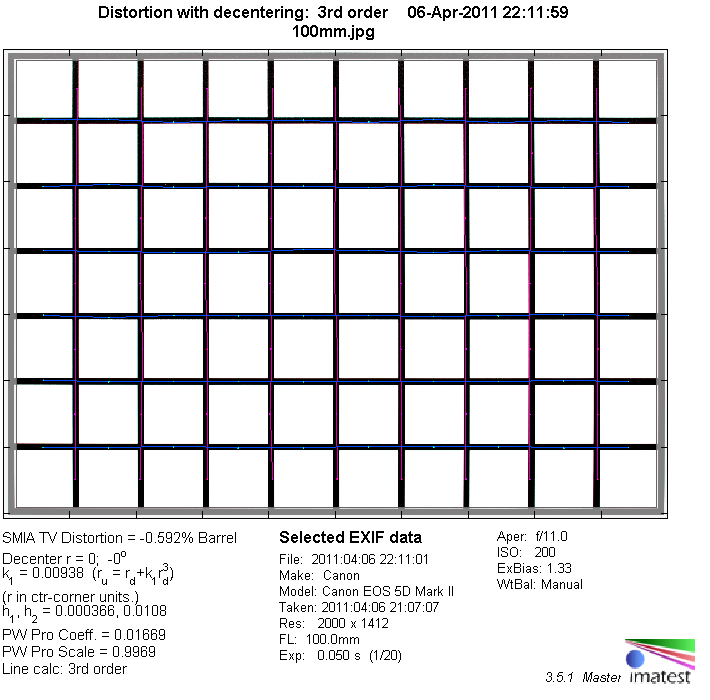|
Canon EF 100-400mm f/4.5-5.6 USM L IS - Full Format Review / Test Report - Analysis |
|
Lens Reviews -
Canon EOS (Full Format)
|
|
Page 2 of 3

Distortion
Distortion is very well controlled with this lens. At 100mm there's only a slight amount of barrel distortion switching to slight pincushion distortion from 200mm and up.
The effect is usually not field-relevant.
|
Move the mouse cursor over the focal length text marks below to observe the respective distortion
|
| 100mm |
200mm |
300mm |
400mm |
|

|
Vignetting
The Canon lens shows a fairly moderate light falloff on full format DSLRs. The vignetting is still visible at max. aperture but it remains (just) below 1EV (1 f-stop). Closing the aperture by one stop improves the issue to a basically negligible degree.

MTF (resolution & chromatic aberrations)
The lens exhibits a very even performance throughout the zoom range which is actually very surprising. The center performance is generally very good to excellent in the relevant aperture range. The borders/corner follow on a good to very good level. The marginally pronounced sweet spot of the lens is at 200mm. Field curvature is next to non-existing.
The centering quality of the tested sample was good albeit not perfect. It showed a slightly weaker performance on the left image side in the lower part of the zoom range.
Please note that the MTF results are not directly comparable across the different systems!
Below is a simplified summary of the formal findings. The chart shows line widths per picture height (LW/PH) which can be taken as a measure for sharpness.
If you want to know more about the MTF50 figures you may check out the corresponding Imatest Explanations
Chromatic Aberrations (CAs)
The EF 100-400mm f/4.5-5.6 USM L IS shows only marginal amount of lateral CAs which is generally not field-relevant. Purple fringing doesn't seem to be a problem either.

Bokeh
Due to the small max. aperture the out-of-focus blur is somewhat underdeveloped - the lens is certainly not meant for portraits. Nevertheless you can achieve a small depth-of-field using a long focal length in conjunction with a close object distance - which is often the case when "shooting" wildlife. Technically the bokeh quality is good and a bit better than average for such zoom lenses. Out-of-focus highlights show an outlining effect which can result in rather rough out-of-focus blur in high contrast scenes. Highlight discs are circular at f/5.6 but the aperture shape gets more obvious from f/8 onwards because the aperture blades are not rounded.
 The low contrast background blur is very smooth (right hand sample crop below) whereas the foreground blur (to the left) is somewhat more nervous.
The low contrast background blur is very smooth (right hand sample crop below) whereas the foreground blur (to the left) is somewhat more nervous.

|